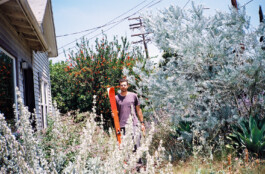
Dust2Crust
Alex Reed makes tiles that feel like artifacts and skis mountains that feel like secrets. In both clay and snow, he moves with quiet intensity, chasing transformation, precision, and play.
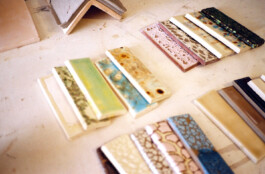
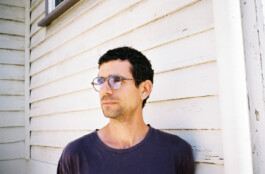
Let’s start with clay – why ceramics? What pulled you toward that material in the first place?
I started taking art seriously in high school. My older brother made a small pot in ceramics class and brought it home, which was very exciting. Now, after working with clay for almost 20 years, I appreciate many other things about it.
What’s one object you've made that still surprises you?
I made a ceramic ghost at a Heath Ceramics Halloween party in 2018. It’s surprising to me because it’s really a perfect object. Sometimes I look at it and think to myself, Damn, I did that.
“Expressing a point of view becomes almost a Zen thought experiment – how to say something using the most limited amount of space and tools.”
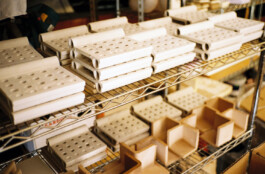
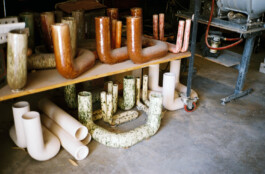
Can you talk a bit about Dust2Crust? What sparked that project, and how has it shaped your relationship to your work – or to the land itself?
Dust2Crust is a ski mountaineering endurance race I started two years ago in the mountains outside of Los Angeles. Calvin Roccio and John Kyle Mohr have been key early contributors. Ski mountaineering – or SkiMo – is backcountry skiing with many climbs and descents outside any managed ski area.
I grew up skiing backcountry pretty seriously, but took a number of years away from the mountains after moving to Los Angeles in 2013. In 2023, I had a bout of restlessness, which coincided with a very plentiful snow year and a dynamic apartment situation (that’s another story), and I found myself returning to the local mountains. I was blown away by what I found that winter – all within two hours of LA – and had an incredible period of discovery on skis.
After that winter, I started trail running to build fitness for longer, faster, bigger objectives. The fitness kept growing, and I hatched the idea for a local SkiMo race, inspired by classic European races like Mezzalama and Patrouille des Glaciers. The anachronistic nature of backcountry skiing near LA – let alone a well-organized wilderness SkiMo race – was something I couldn’t get out of my head. The race is a fitness test piece, a celebration of the fleeting nature of skiing around LA, and a collaborative design project with friends.
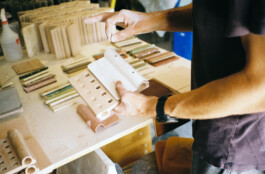
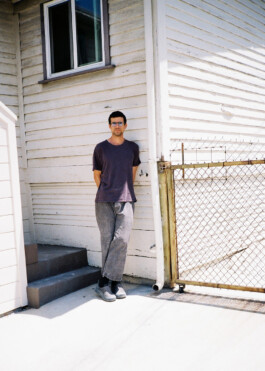
Both ceramics and long-distance skiing seem romantic on the surface – but they’re also incredibly technical and methodical. How do those more precise, mathematical aspects play into your creative process?
Yes, that’s a good insight. In college, I had aspirations to be a country potter at the end of a dirt road but quickly began developing a more technical, industrial approach. I’m prone – sometimes to a fault – to go deep down the rabbit hole of something if I sense it could be beneficial, even if the application isn’t totally clear at the time. Exploratory backcountry skiing also rewards this kind of "research": reading old blogs, studying satellite imagery from past seasons, spending hours on mapping software, and so on.
What does a desert road trip on a scooter teach you about attention?
A very small “bubble” allows you to consider each and every thing in that bubble – why it’s there, what it’s doing, and what your relationship to it is.
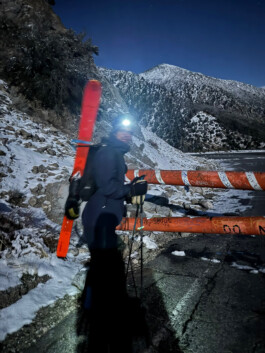
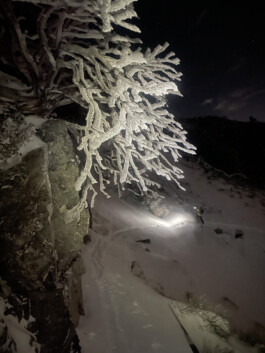
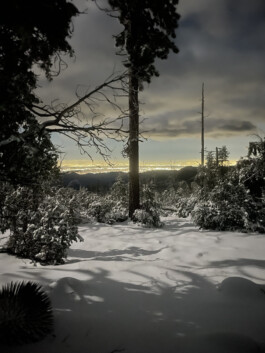
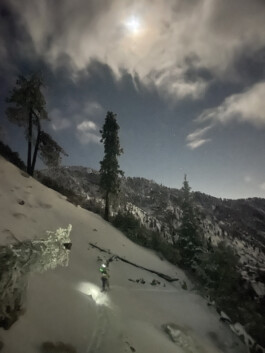
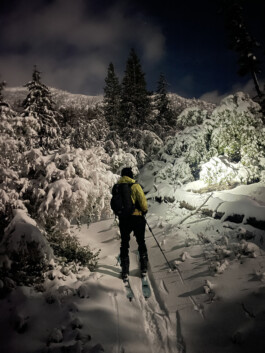
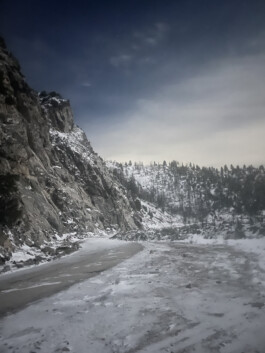
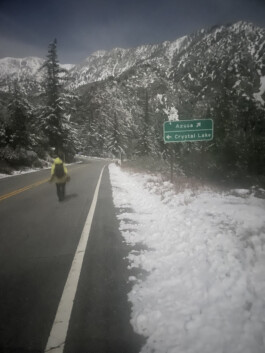
Crystal Lake Eclipse Pow Night Trip
Crystal Lake Eclipse Pow Night Trip
Crystal Lake Eclipse Pow Night Trip
Crystal Lake Eclipse Pow Night Trip
Crystal Lake Eclipse Pow Night Trip
Crystal Lake Eclipse Pow Night Trip
Crystal Lake Eclipse Pow Night Trip
“The race is a fitness test piece, a celebration of the fleeting nature of skiing around LA, and a collaborative design project with friends.”
You’ve mentioned the importance of adventure in your life – how does risk, or even failure, show up in your studio practice?
A few years ago, I had a bout of restlessness – depression? anxiety? ambition without an outlet? – and realized my work, which had long been a main source of adventure, no longer felt that way. After a decade of focused, deliberate, career-oriented work, I was hungry to apply my ambition in ways not directly tied to my studio. This is probably about adventure and physicality.
In the studio, I approach risk in a very calculated way – always in relation to what I’ve done before, to estimate the likelihood of success. “Success” in my work lately is very simple: Will the piece survive the ceramic process? Will the glaze melt the way I want it to? I usually approach new ideas slowly, testing prototypes and mockups along the way.
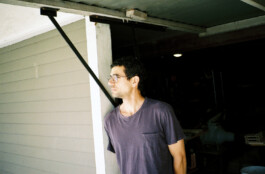
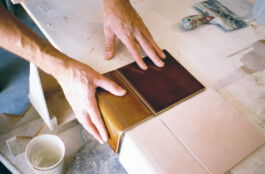
The name Dust2Crust implies both journey and transformation. Do you see your ceramic process in a similar way – something that begins as earth and becomes something entirely different?
Yes, there are lots of fun linguistic parallels between Dust2Crust and working with clay. Clay starts as dust, then it’s formed and hardened. The dust of the studio coats most of my clothes and shoes. There’s also the dust of Los Angeles, and the crust of frozen, icy snow. There’s a lightheartedness in the name, too – neither dust nor crust is particularly appealing in most contexts. In skiing, people sometimes describe conditions as “dust on crust” when a few snow flurries fall on hard, icy snow. Dust2Crust promises not even that – its “dust” is more likely the dry trail dust required before reaching the snow line.
You're working on tiles right now – what drew you to that format, and how is it different from your past ceramic work?
The tile work came from a few different places. When I first moved to LA, I worked for Heath Ceramics in product development and design – tableware and tile. I began to appreciate tile as a design and manufacturing problem. A single tile, in some ways, is ceramics at its most reduced: just a slab of clay and glaze. Expressing a point of view becomes almost a Zen thought experiment – how to say something using the most limited amount of space and tools.
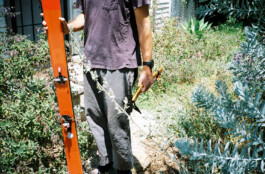
The colors and textures are beautiful and very unique. Is any of this accidental? I’m guessing not – but maybe inspired by the mountains, snow, rock, and weather?
The colors and surfaces are highly designed, calibrated, and researched. They’re the result of years of experimentation and development. I look more to color theory and close observation of the world around me than to direct inspiration from geology.
“I realized my work, which had long been a main source of adventure, no longer felt that way.”
What does it mean to try to “put SoCal backcountry skiing on the map”? And what role do design, storytelling, or aesthetics play in that mission?
Well, skiing around LA is already “on the map” if you know where to look. People have been skiing in Southern California for decades, so I’m definitely not claiming to be the first. I’m inspired to add to that culture and history in my own way. The proximity of legitimate alpine terrain to LA is really singular – an incredible story that could be told in novel and beautiful ways. Dust2Crust is a design project.
Any dream destinations for a future Dust2Crust course?
Yes! The last two years, the race has been held at San Gorgonio, but everything depends on getting enough snow. I’d love for Dust2Crust to circulate between three different routes, repeating every three years. In addition to San Gorgonio, I’ve drawn up routes along Highway 2 in Angeles National Forest and in the Mt. San Antonio area of Sheep Mountain Wilderness. Besides the limited window due to fickle snow, there are permitting and logistical factors that make it tricky. Stay tuned…
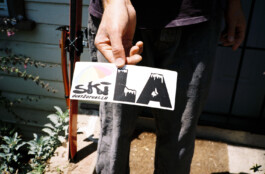

Dust2Crust
Alex Reed makes tiles that feel like artifacts and skis mountains that feel like secrets. In both clay and snow, he moves with quiet intensity, chasing transformation, precision, and play.


Let’s start with clay – why ceramics? What pulled you toward that material in the first place?
I started taking art seriously in high school. My older brother made a small pot in ceramics class and brought it home, which was very exciting. Now, after working with clay for almost 20 years, I appreciate many other things about it.
What’s one object you've made that still surprises you?
I made a ceramic ghost at a Heath Ceramics Halloween party in 2018. It’s surprising to me because it’s really a perfect object. Sometimes I look at it and think to myself, Damn, I did that.
“Expressing a point of view becomes almost a Zen thought experiment – how to say something using the most limited amount of space and tools.”


Can you talk a bit about Dust2Crust? What sparked that project, and how has it shaped your relationship to your work – or to the land itself?
Dust2Crust is a ski mountaineering endurance race I started two years ago in the mountains outside of Los Angeles. Calvin Roccio and John Kyle Mohr have been key early contributors. Ski mountaineering – or SkiMo – is backcountry skiing with many climbs and descents outside any managed ski area.
I grew up skiing backcountry pretty seriously, but took a number of years away from the mountains after moving to Los Angeles in 2013. In 2023, I had a bout of restlessness, which coincided with a very plentiful snow year and a dynamic apartment situation (that’s another story), and I found myself returning to the local mountains. I was blown away by what I found that winter – all within two hours of LA – and had an incredible period of discovery on skis.
After that winter, I started trail running to build fitness for longer, faster, bigger objectives. The fitness kept growing, and I hatched the idea for a local SkiMo race, inspired by classic European races like Mezzalama and Patrouille des Glaciers. The anachronistic nature of backcountry skiing near LA – let alone a well-organized wilderness SkiMo race – was something I couldn’t get out of my head. The race is a fitness test piece, a celebration of the fleeting nature of skiing around LA, and a collaborative design project with friends.


Both ceramics and long-distance skiing seem romantic on the surface – but they’re also incredibly technical and methodical. How do those more precise, mathematical aspects play into your creative process?
Yes, that’s a good insight. In college, I had aspirations to be a country potter at the end of a dirt road but quickly began developing a more technical, industrial approach. I’m prone – sometimes to a fault – to go deep down the rabbit hole of something if I sense it could be beneficial, even if the application isn’t totally clear at the time. Exploratory backcountry skiing also rewards this kind of "research": reading old blogs, studying satellite imagery from past seasons, spending hours on mapping software, and so on.
What does a desert road trip on a scooter teach you about attention?
A very small “bubble” allows you to consider each and every thing in that bubble – why it’s there, what it’s doing, and what your relationship to it is.







Crystal Lake Eclipse Pow Night Trip
Crystal Lake Eclipse Pow Night Trip
Crystal Lake Eclipse Pow Night Trip
Crystal Lake Eclipse Pow Night Trip
Crystal Lake Eclipse Pow Night Trip
Crystal Lake Eclipse Pow Night Trip
Crystal Lake Eclipse Pow Night Trip
“The race is a fitness test piece, a celebration of the fleeting nature of skiing around LA, and a collaborative design project with friends.”
You’ve mentioned the importance of adventure in your life – how does risk, or even failure, show up in your studio practice?
A few years ago, I had a bout of restlessness – depression? anxiety? ambition without an outlet? – and realized my work, which had long been a main source of adventure, no longer felt that way. After a decade of focused, deliberate, career-oriented work, I was hungry to apply my ambition in ways not directly tied to my studio. This is probably about adventure and physicality.
In the studio, I approach risk in a very calculated way – always in relation to what I’ve done before, to estimate the likelihood of success. “Success” in my work lately is very simple: Will the piece survive the ceramic process? Will the glaze melt the way I want it to? I usually approach new ideas slowly, testing prototypes and mockups along the way.


The name Dust2Crust implies both journey and transformation. Do you see your ceramic process in a similar way – something that begins as earth and becomes something entirely different?
Yes, there are lots of fun linguistic parallels between Dust2Crust and working with clay. Clay starts as dust, then it’s formed and hardened. The dust of the studio coats most of my clothes and shoes. There’s also the dust of Los Angeles, and the crust of frozen, icy snow. There’s a lightheartedness in the name, too – neither dust nor crust is particularly appealing in most contexts. In skiing, people sometimes describe conditions as “dust on crust” when a few snow flurries fall on hard, icy snow. Dust2Crust promises not even that – its “dust” is more likely the dry trail dust required before reaching the snow line.
You're working on tiles right now – what drew you to that format, and how is it different from your past ceramic work?
The tile work came from a few different places. When I first moved to LA, I worked for Heath Ceramics in product development and design – tableware and tile. I began to appreciate tile as a design and manufacturing problem. A single tile, in some ways, is ceramics at its most reduced: just a slab of clay and glaze. Expressing a point of view becomes almost a Zen thought experiment – how to say something using the most limited amount of space and tools.

The colors and textures are beautiful and very unique. Is any of this accidental? I’m guessing not – but maybe inspired by the mountains, snow, rock, and weather?
The colors and surfaces are highly designed, calibrated, and researched. They’re the result of years of experimentation and development. I look more to color theory and close observation of the world around me than to direct inspiration from geology.
“I realized my work, which had long been a main source of adventure, no longer felt that way.”
What does it mean to try to “put SoCal backcountry skiing on the map”? And what role do design, storytelling, or aesthetics play in that mission?
Well, skiing around LA is already “on the map” if you know where to look. People have been skiing in Southern California for decades, so I’m definitely not claiming to be the first. I’m inspired to add to that culture and history in my own way. The proximity of legitimate alpine terrain to LA is really singular – an incredible story that could be told in novel and beautiful ways. Dust2Crust is a design project.
Any dream destinations for a future Dust2Crust course?
Yes! The last two years, the race has been held at San Gorgonio, but everything depends on getting enough snow. I’d love for Dust2Crust to circulate between three different routes, repeating every three years. In addition to San Gorgonio, I’ve drawn up routes along Highway 2 in Angeles National Forest and in the Mt. San Antonio area of Sheep Mountain Wilderness. Besides the limited window due to fickle snow, there are permitting and logistical factors that make it tricky. Stay tuned…
